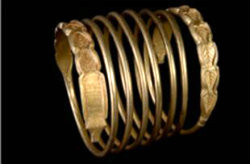Sharing tools for light research
The European physics community benefits when various national research infrastructure facilities are united under a single administration. Unified transnational access leads to improved sharing of information and better research. It also especially benefits researchers in new or less affluent European countries. Such was the purpose of the 'European light sources activities - synchrotrons and free electron lasers' (ELISA)(opens in new window) project. The 17-member consortium ran from March 2009 to August 2011. The aim was to integrate certain physics research infrastructures for common European use, including the world's largest network of synchrotrons and free-electron lasers. The project addressed activities covering three main themes: networking, joint research and, most importantly, transnational access. The goals also helped to develop the European Research Area (ERA) and provide a long-term vision. The project's transnational access programme yielded the most significant results: support for 4 300 users and 2 000 experiments, leading to 700 refereed journal publications. A spin-off outcome was the establishment of the European Synchrotron User Organisation (ESUO), which exists to support user needs and help them utilise the facilities. The organisation will structure the ERA in coming years. Three Joint Research Activities resulted in powerful new detectors, plus studies of X-ray optics. The consortium facilitated feasibility studies for the next free-electron laser season. Group members conducted four networking activities, the first of which created an association of communicators. The network will assess European synchrotron activities, in addition to helping with dissemination and sharing of information. One achievement was a travelling exhibition. The other networking activities either helped scientists exchange information or provided training to PhD students and junior scientists. The ELISA project created networks, fostered joint research and provided access to facilities — all leading to greater opportunity for researchers and higher-quality research. The legacy organisation ESUO will help to guide and structure research in the future.



